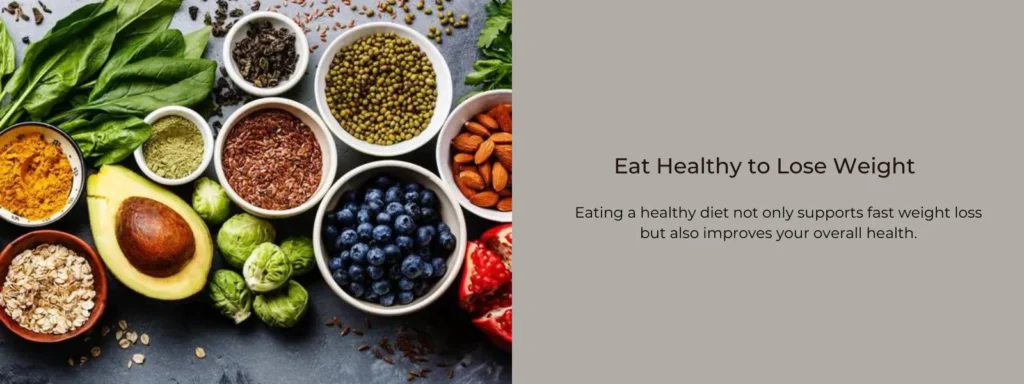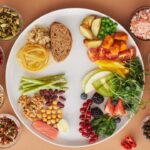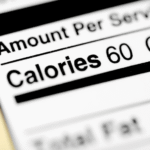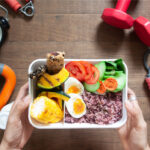Eating well isn’t about strict diets. Experts say lasting health comes from habits you can keep. Instead of fad plans, focus on simple swaps and balance. For example, Harvard Health notes that maintaining healthy weight means “replacing unhealthy foods with healthy ones – not for a few weeks, but forever”. In other words, find nutritious foods you enjoy and make them part of your daily routine. As one expert puts it, “remember that the best diet is the one you’ll stick to”. These tips work for anyone – omnivores and vegetarians alike – because a healthy eating plan “includes a variety of foods from the major food groups: fruits, vegetables, whole grains, … lean protein (beans, legumes, nuts and seeds), and healthy fats”.
Eat a Balanced Plate

Aim for meals that give you steady energy and nutrients. A Cleveland Clinic dietitian advises that the best eating plans “feature a balanced diet filled with different types of nutrient-rich foods”. In practice, that means:
- Fruits and Vegetables: Fill half your plate with colorful fruits and veggies. These fiber-rich foods keep you full longer and boost vitamins. Aim for a variety of colors (greens, reds, oranges). (Note: potatoes and fries count differently on the Healthy Eating Plate, since non-starchy veggies have more vitamins per bite.)
- Whole Grains: Make ¼ of your plate whole grains like brown rice, oats, whole-wheat bread or quinoa. Whole grains and other complex carbohydrates (beans, starchy vegetables) digest slowly, providing lasting energy. They also give fiber, which aids digestion and helps control appetite.
- Lean Protein: Reserve ¼ of your plate for protein. Choose lean animal proteins (fish, chicken, turkey) or plant proteins (beans, lentils, tofu, nuts). For example, a cooked chicken breast or veggie burger about the size of a deck of cards (~3 ounces) is one serving. Protein helps build and repair tissues and also keeps you satisfied between meals.
- Healthy Fats: Use healthy oils (olive, canola, soybean) for cooking or dressing. Add a small handful of nuts, a slice of avocado, or a drizzle of olive oil. Limit butter and avoid trans fats.
- Hydration: Drink water throughout the day. Water, tea or coffee (without much sugar) are best. Even mild dehydration can make you feel tired, so keeping a water bottle handy helps your energy.
Avoiding highly processed snacks and sugary drinks is also key. Harvard’s Healthy Eating Plate advises steering clear of sodas and limiting sweet treats. Instead, focus on whole, minimally processed foods. In short, think of your plate as half vegetables/fruit, a quarter whole grains, and a quarter protein, with water to drink.
Also Read Full-Body Home Workout Plan for Beginners (No Equipment Needed)
Control Portions and Eat Mindfully
How much you eat matters. Research shows people will eat more when given bigger portions. To avoid this, use smaller plates, bowls or measuring cups to keep portions reasonable. For example, a serving of meat or beans is roughly the size of a deck of cards, and a serving of oil or butter is about the size of a pair of dice. Over time, these visual cues help you gauge portions without measuring every time.
Try to eat slowly and without distraction (no TV or phone). Listen to your body: pause and ask if you’re truly hungry before reaching for more food. Mindful eating helps prevent overdoing it out of habit or boredom. As Mayo Clinic experts note, practicing these habits gives you more control over how many calories you eat, which helps maintain a healthy weight and energy level.
Plan Meals and Shop Smart
Planning is a powerful tool. If you decide meals in advance, you’re less likely to grab unhealthy options on the fly. Try this strategy: pick a few dinner ideas for the week and make a grocery list accordingly. When you shop with a plan, you can buy exactly what you need for those meals. That saves money and keeps you on track.
When shopping, stick mostly to the store’s perimeter (produce, meat, dairy) and avoid aisles of junk food. Buy seasonal fruits and vegetables – they’re often cheaper and just as nutritious. Consider cooking extra at dinner to have leftovers for lunch. As one expert advises, “Plan out a few meals you want to prepare the next week and create your shopping list based on these ingredients”.
Other smart shopping tips from nutrition experts:
- Plan and list: Prepare a meal plan and shopping list to avoid impulse buys.
- Don’t shop hungry: Have a light snack (an apple or a handful of nuts) before shopping. When you’re hungry, unhealthy foods seem more tempting.
- Buy sale items: If fresh veggies, lean meats or other favorites go on sale, stock up and freeze extras for later.
- Choose filling foods: Pick snacks and foods that satisfy hunger. For example, although a bag of chips may be cheaper than fresh apples per pound, those apples keep you full longer.
Over time, planning and smart shopping become second nature. Cooking at home more often lets you control ingredients and portions. Even simple meals like a stir-fry or soup loaded with vegetables can be healthy and budget-friendly.
Smart Snacking
Healthy snacking can keep energy up between meals. Instead of chips or candy, opt for whole-food snacks in proper portions. Good choices include a piece of fruit with a spoon of peanut butter, a small handful of nuts, plain yogurt with berries, or cut vegetables with hummus. Harvard experts note that healthy snacks “include almonds or pistachios, string cheese with an apple, Greek yogurt, or a banana with peanut butter”(SRC-HealthHardvard).
Pack snacks ahead of time if you’ll be out. Having prepared fruit, baby carrots, or mixed nuts on hand helps you avoid vending machines and fast food when hunger strikes. And remember: you don’t have to eliminate snacks – just choose nutritious ones and watch portion sizes.
Eating Out Wisely
Dining out is normal, and you can still eat healthily at restaurants. Follow these tips:
- Plan ahead: Check the menu online before you go. Decide what fits your goals and how to balance your day’s calories. For example, if you know you’ll have a big dinner, you might eat lighter meals earlier. Many restaurants post calories online or on-site, which can guide your choice.
- Skip fast food traps: Eating on the go is easier if you avoid drive-thrus. Many convenience stores now offer healthier grab-and-go options like salads, yogurt or whole fruit instead of donuts or fries.
- Choose cooking methods: Order grilled, baked, steamed or broiled items, which are usually lower in fat. Avoid fried, breaded or creamy dishes. For example, grilled chicken or fish and steamed veggies are better choices than fried chicken or creamy pasta.
- Load up on plants: Start with a salad or vegetable soup (broth-based) if available. Make vegetables and fruits a large part of your meal – think MyPlate: half plate vegetables/fruit, a quarter grains, a quarter protein. If an entrée is huge, eat half and ask for a takeout box for the rest. This avoids overeating on rich foods.
- Watch sauces and dressings: These can be high in added fat and salt. Ask for dressings, gravies or sauces on the side, so you control how much you use.
- Beverages matter: Choose water or unsweetened tea instead of soda or sugary cocktails. Alcohol and sweet coffee drinks add hidden calories and can make you eat more later.
In general, don’t feel guilty enjoying a meal out. Just use common sense – balance the indulgence with lighter choices earlier or later, and get lots of veggies on your plate when you do dine out.
Stay Hydrated
Drink plenty of fluids (preferably water) every day. Thirst is often confused with hunger, and even mild dehydration can make you feel fatigued. Carry a water bottle and sip regularly, especially with meals. If you like flavor, try adding lemon or cucumber slices to your water. Limiting caffeinated or sugary drinks will also help you avoid “crashes” later. As the Cleveland Clinic notes, proper hydration “helps everything in your body work more efficiently to keep you moving”.
FAQ
Q: Do I need to cut out carbs?
No – carbohydrates are an important energy source. The trick is which carbs you eat. Experts say your body needs carbs, so cutting them all isn’t necessary. Instead, choose complex carbohydrates that digest slowly, like whole grains (brown rice, whole wheat), beans, legumes, fruits and vegetables. These provide lasting energy. Harvard’s Healthy Eating Plate also emphasizes that “the type of carbohydrate is more important than the amount”. In other words, favor veggies, fruits, beans and whole grains over white bread, sweets and sugary drinks. This way, you get fiber and nutrients without the energy spikes and crashes of simple sugars.
Q: How do I stop emotional eating?
Emotional eating happens when we turn to food for comfort instead of hunger. Mayo Clinic experts suggest pausing and identifying feelings before snacking. Ask yourself “Am I truly hungry?” If the urge comes from stress, boredom or sadness, try another coping strategy first – such as taking a walk, calling a friend, or jotting in a journal. A licensed counselor or support group can also help uncover triggers. In practice, noticing an emotion (“I feel anxious”) and addressing it directly (a short break, deep breathing, or talking it out) is often more effective than soothing yourself with food. Over time, developing non-food ways to deal with feelings (exercise, hobbies, relaxation) breaks the cycle of emotional eating.
Q: Can I eat healthy on a budget?
Absolutely. Healthy eating does not have to be expensive. Planning and making smart choices can stretch your food dollars. For instance, focus on affordable staples: beans, lentils, rice, oats and frozen vegetables often cost less and last longer than exotic or fresh items. Plan meals (soups, stews, stir-fries) that use similar ingredients in different ways, so nothing goes to waste. Buying in-season produce and store brands also saves money. Nutrition experts specifically advise planning your meals and including inexpensive plant proteins (like beans, peas or tofu) to boost nutrition without higher costs. Lastly, don’t shop hungry and take advantage of sales: if fruits or lean meats are discounted, buy extra and freeze. With these strategies, you can cook simple, nutritious meals every day without overspending.
Sources: Authoritative health organizations and experts (Harvard Health, Mayo Clinic, CDC, Cleveland Clinic) emphasize these balanced, practical approaches
Author- Ayush










